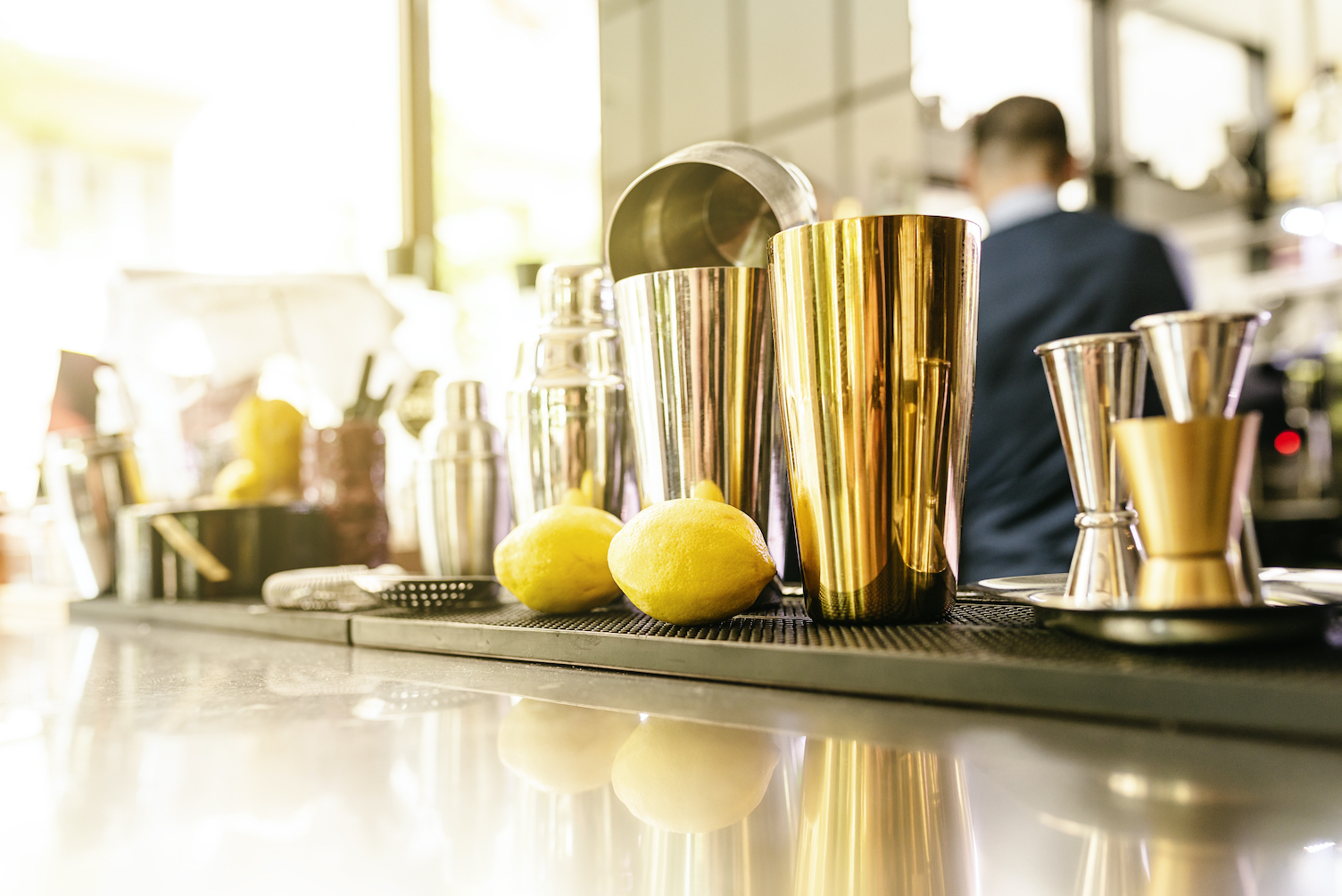Some of the most relied-upon bar tools of professional bartenders are the cocktail shaker and the jigger. Whether you’re preparing a craft cocktail or mixing classic bar beverages, the seasoned bartender knows that these devices are essential bar accessories.
Although they may appear simple on the surface, there is more than meets the eye when it comes to cocktail shakers and jiggers. In this guide, we’ll explore different types of shakers and cocktail jiggers, helping you to select the right bar tool for your needs.
Cocktail Shakers
The role of the cocktail shaker in the home bar or professional establishment cannot be overstated. The shaker is designed to make mixing cocktail ingredients as effortless and efficient as possible. If you’ve ever spent time in a bar or nightclub, chances are you’ve seen shakers in action as bartenders prepare some of the most popular beverages in bar circles.
There are four primary types of cocktail shaker; the featured best selling models come in various sizes and may be constructed of glass or stainless steel. Most are dishwasher safe, although it’s best to check with the manufacturer for specific washing recommendations.
Let’s take a more detailed look at each type of cocktail shaker…
Glass Boston Cocktail Shaker
Boston shakers are amongst the most popular types of cocktail shaker. Comprised of two pieces, ingredients are poured into the larger stainless steel receptacle and capped with a tight-fitting pint-sized glass. A quick shake (master mixologists usually recommend anything over 11 seconds) is all it takes to blend ingredients to the right consistency. The two sides of the shaker seal completely, preventing leakage. Many pro bartenders (especially in Irish and sports bars) prefer the glass Boston shaker, as the glass it allows the bartender (and the patrons) to view the mixing process while preparing cocktails. Perhaps the only downside to this style is that the pint-sized glasses have a tendency to break, particularly when less-experienced bartenders attempt breaking the seal between the two halves.
Tin-on-Tin Shaker
A variation of the Boston, the tin-on-tin shaker is two pieces but substitutes stainless steel for the more delicate glass of the Boston. These shakers tend to hold more volume, allowing prep for two cocktails at once. If you’re a professional bartender in a high-capacity establishment, the easy separation (just a tap on the side of the tins), ease of cleaning, and durability are factors that make this style of shaker a must-have.
French Shaker
Elegantly shaped but simple in its construction, the French shaker (sometimes referred to as a Parisian shaker) is very similar to the tin-on-tin model described above. Two halves, typically crafted from stainless steel, fit tightly together. This type of shaker is less common but no less revered by mixologists of every skill level, especially due to the vintage look and feel.
Cobbler Shaker
For the home bartender, the the classic design of the Cobbler-style cocktail shaker is more familiar. It takes the general shape of the French shaker but adds two components in the form of an internal strainer and a tightly-fitting cap. In other words, there are three pieces – the body, the strainer lid, and the cap.
Like some of its more popular cousins, the Cobbler is available in different measurement sizes and styles. It is most commonly available in highly-polished metal, such as stainless steel. There are two potential downsides to this style; they can be difficult to seal and may also be hard to clean without a dishwasher or glass washer handy.
Despite these potential drawbacks, when you’re purchasing bar supplies for your home bar, a Cobbler should probably be at the top of your list, as it avoids the need for purchasing a separate strainer.
Jiggers
When it comes to making delicious cocktails for your guests, consistency is key. Too much of any one ingredient (particularly liquor) can ruin the delicate balance of flavors in classic cocktail recipes. When your customer demands perfection, there is one solution… To ensure consistency time and again, one of the most useful tools is the jigger.
Typical jiggers have two sides; a one-ounce side and a two-ounce side provide the measurements needed for an accurate pour. The smaller of the two measurements is equivalent to a shot (the “jigger shot”), such as that served in shot glasses like the pony shot glass or shooter. The larger side is used for measuring liquor for multiple customers or multiple drinks. Of course, there are hundreds of brands, styles and sizes to choose from, including jiggers measured in ounces or milliliters.
To use a jigger, simply fill the liquid receptacle with the spirits needed (to the very top, the most common error is underfilling) and pour into a shaker or glassware to complete the drink.
While some of the cheaper jigger models may be made of plastic, most bartending professionals prefer stainless, glass, or pewter jigger choices. The one benefit of plastic jiggers for beginners is the transparency allows the user to view the liquid poured through the side, allowing more accuracy.
Whether you’re going for perfection or just learning, when your job is to create delicious refreshments for your guests, the jigger is an essential accessory that makes your job easier than ever. One of the more unusual styles is that of the multi level jigger, which provides even more control over pouring. Most pros can freehand-pour relatively accurately, but the home mixologist may not have the same level of experience. Regardless of your background, if you find yourself in a professional setting, always remember that the jigger also serves as a cost-control device, preventing overpouring from cutting into overhead expenses (and accidentally overserving guests).

